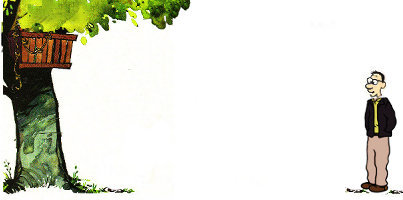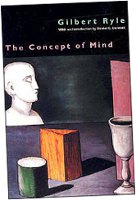Seeing and being
Preface
 This is an essay on the “hard problem” of consciousness. If we focus on visual consciousness for simplicity, this is often said to be the problem of explaining how the everyday phenomenon we call seeing “arises” from the brain. But I have never liked this way of phrasing the problem because it strikes me that we have a poor grasp (to begin with) of the everyday phenomenon of seeing itself. —What is this thing we call seeing? So, in the essay, I explore instead the prior question of what we suppose the everyday phenomenon of seeing even to be—a question just as hard, but one which I find to be considerably more fruitful. And the only decent answer I can come up with suggests that a certain form of “neutral monism” may be the true relation between mind and body. Written in 2014.
This is an essay on the “hard problem” of consciousness. If we focus on visual consciousness for simplicity, this is often said to be the problem of explaining how the everyday phenomenon we call seeing “arises” from the brain. But I have never liked this way of phrasing the problem because it strikes me that we have a poor grasp (to begin with) of the everyday phenomenon of seeing itself. —What is this thing we call seeing? So, in the essay, I explore instead the prior question of what we suppose the everyday phenomenon of seeing even to be—a question just as hard, but one which I find to be considerably more fruitful. And the only decent answer I can come up with suggests that a certain form of “neutral monism” may be the true relation between mind and body. Written in 2014.
 This is an essay on the “hard problem” of consciousness. If we focus on visual consciousness for simplicity, this is often said to be the problem of explaining how the everyday phenomenon we call seeing “arises” from the brain.
This is an essay on the “hard problem” of consciousness. If we focus on visual consciousness for simplicity, this is often said to be the problem of explaining how the everyday phenomenon we call seeing “arises” from the brain.
3. The diaphanous nature of seeing
The diaphanous nature of seeing is sometimes known as the “transparency” of seeing. It is what makes seeing seem more like looking out of a window than like watching a display on a movie screen.
A. D. Smith puts it this way:
Here’s another description by Wolfgang Metzger:
The diaphanousness of seeing is what brings this difficulty home. Whenever we try to focus on the fact that we see something, we invariably end up focusing on the thing that we see. The “act of seeing” itself appears to be a nebulous and ethereal thing that resists being pinned down. So we can’t seem to get a grip on this thing we call “seeing.” And yet we claim to know what it is anyway from “personal experience.” This is not a happy situation.
It’s no wonder that some have been driven to deny the existence of the “visual experience” altogether, calling it a gratuitous illusion. Alva Noë remarks:
We have turned “inward” to consider our first-person experience of seeing but this hasn’t helped so far – when we look for the “seeing,” all we find is the world. Recall that the same was true when we considered the matter from the third-person point of view. In the familiar picture below, if there is no “private bubble of consciousness,” then all that remains is the man and the tree.
So it seems to make no difference whether we consider the matter from the first-person or the third-person point of view. In either case, the phenomenon of seeing is elusive.
It is some wonder that the man on the street never notices this difficulty, but we might attribute this to the fact that he doesn’t need to think about it, and can get by with a “practical grasp” of the concept of seeing. A deeper reason might be that, unlike a philosopher, a plain man is not liable to succumb to a “false picture” of seeing. A plain man has no preconception of what seeing ought to be – he just embraces the phenomenon as it is. He does not regard himself as a materialist or a dualist, or as wanting to reconcile the findings of science with the dictates of religion. He just wants, as it might be, to ensure that he can see the tree in his yard from his bathroom. A philosopher, on the other hand, will try to force an everyday phenomenon into a preconceived mould, where all the trouble awaits.
What the diaphanousness of seeing teaches us is that the concept of seeing cannot be a straightforward one. In particular, it cannot be that of a “process” of any ordinary sort, like the whistling of a kettle or the beating of a drum. If it were, we shouldn’t have so much trouble “locating” it in the natural world. Gilbert Ryle put it this way:
Ryle himself never found a fully satisfactory answer to this question. He did offer a partial answer, however, which we might consider briefly as an example of the kind of lateral thinking that is required here. His partial answer was that ‘see’ is not a regular verb like ‘kick,’ as one might be inclined to think, but is rather (what he called) a success verb.
Consider the difference between ‘kick’ and ‘score.’ If a player kicks a ball and scores, everyone would agree that the scoring is not some extra bit of activity that accompanies the kicking, but is simply a case of “successful” kicking. (What counts as “successful” depends on the context in question, e.g., which game is being played.)
Ryle called ‘score’ a success verb, and observed that it would be futile to try to discern the “scoring” by looking for an additional process that was separate from the kicking. The concept of “scoring” must obviously be explained in a different way – e.g., in a football match, to score is to kick the ball between the posts.
Likewise, Ryle distinguished ‘looking’ from ‘seeing’ and suggested that while you can observe someone (even yourself) looking at something, you can never observe the “seeing” that may simultaneously be going on, because the seeing is not some extra bit of activity that accompanies the looking, but is simply a case of “successful” looking. ‘See’ is a success verb, standing to ‘look’ as ‘score’ stands to ‘kick.’
It remains, of course, to explain what “successful” means in the context of looking, just as we explained what “successful” meant above in the context of kicking a football. Unfortunately, this is the point at which Ryle felt unsatisfied with what he had to say. (See Chapter 7 of his book, especially the “Afterthoughts.”) So, despite its initial promise, Ryle’s partial analysis does not ultimately bear fruit.
What Ryle did succeed in showing, however, was that a “non-straightforward” account of the concept of seeing is perfectly possible, if only we would think to look for one. It is the sort of account we need if we are to surmount our current impasse.
The diaphanous nature of seeing is sometimes known as the “transparency” of seeing. It is what makes seeing seem more like looking out of a window than like watching a display on a movie screen.
A. D. Smith puts it this way:
Needless to say, the metaphor of peeping through a window doesn’t go very far because the “peeping” is precisely what we are trying to get clear on. But we are merely using it to emphasize the diaphanous nature of seeing.You open your eyes, and objects are simply present to you visually. The shutters go up, as it were, and the world is simply there—as if we were “peeping through our sense-organs,” as Sextus Empiricus nicely put it. (The Problem of Perception, p. 43.)
Here’s another description by Wolfgang Metzger:
We were trying to uncover our everyday concept of seeing – trying to discern the “place” of seeing in the natural world of rocks, trees, and human bodies that we know we inhabit. The phenomenon must obviously have a place, since it is an entirely natural phenomenon, and yet we were hard pressed to locate that place – to ascertain the “logical geography” of the concept of seeing.For people who naively look around, their own eyes appear to be a kind of window. As soon as the curtains, the eyelids, are opened there “is” a visible world of things and of other beings out there. Nothing could arouse the suspicion that any of its recognizable properties might originate in the observer or could be codetermined by the observer’s nature – except perhaps for the effects of greater or lesser transparency of the “window panes.” (The Laws of Seeing, Introduction.)
The diaphanousness of seeing is what brings this difficulty home. Whenever we try to focus on the fact that we see something, we invariably end up focusing on the thing that we see. The “act of seeing” itself appears to be a nebulous and ethereal thing that resists being pinned down. So we can’t seem to get a grip on this thing we call “seeing.” And yet we claim to know what it is anyway from “personal experience.” This is not a happy situation.
It’s no wonder that some have been driven to deny the existence of the “visual experience” altogether, calling it a gratuitous illusion. Alva Noë remarks:
It is not always clear what such denials amount to, but we certainly cannot deny that we see the world around us. We are therefore entitled to ask what we take this to mean. It is not an option to deny that we ever see things, or to claim that there is no such concept as that of seeing. That would obviously be wrong.According to a conception of visual experience that has been widely held by perceptual theorists, you open your eyes and – presto! – you enjoy a richly detailed picture-like experience of the world, one that represents the world in sharp focus, uniform detail and high resolution from the centre out to the periphery ...Recent work in perceptual psychology [questions] whether we really enjoy the sort of richly detailed, snapshot-like visual experiences we think we do. If we do not enjoy such experiences, then we are not faced with the problem of how the brain gives rise to them. (‘Is the Visual World a Grand Illusion?,’ p. 2.)
We have turned “inward” to consider our first-person experience of seeing but this hasn’t helped so far – when we look for the “seeing,” all we find is the world. Recall that the same was true when we considered the matter from the third-person point of view. In the familiar picture below, if there is no “private bubble of consciousness,” then all that remains is the man and the tree.
So it seems to make no difference whether we consider the matter from the first-person or the third-person point of view. In either case, the phenomenon of seeing is elusive.
It is some wonder that the man on the street never notices this difficulty, but we might attribute this to the fact that he doesn’t need to think about it, and can get by with a “practical grasp” of the concept of seeing. A deeper reason might be that, unlike a philosopher, a plain man is not liable to succumb to a “false picture” of seeing. A plain man has no preconception of what seeing ought to be – he just embraces the phenomenon as it is. He does not regard himself as a materialist or a dualist, or as wanting to reconcile the findings of science with the dictates of religion. He just wants, as it might be, to ensure that he can see the tree in his yard from his bathroom. A philosopher, on the other hand, will try to force an everyday phenomenon into a preconceived mould, where all the trouble awaits.
What the diaphanousness of seeing teaches us is that the concept of seeing cannot be a straightforward one. In particular, it cannot be that of a “process” of any ordinary sort, like the whistling of a kettle or the beating of a drum. If it were, we shouldn’t have so much trouble “locating” it in the natural world. Gilbert Ryle put it this way:
Ryle’s main target here was the Cartesian conception of seeing as a “ghostly process” in a material body, but his remarks have a considerably broader reach. Many philosophers nowadays think of seeing as a “neural process” that occurs in our skulls as the result of retinal stimulation. I have already explained why such a concept cannot reasonably be attributed to the ordinary man and Ryle would have agreed:Epistemologists have sometimes confessed to finding the supposed cognitive activities of seeing, hearing and inferring oddly elusive. If I descry a hawk, I find the hawk but I do not find my seeing of the hawk. My seeing of the hawk seems to be a queerly transparent sort of process, transparent in that while a hawk is detected, nothing else is detected answering to the verb in ‘see a hawk.’ But the mystery dissolves when we realise that ‘see’, ‘descry’ and ‘find’ are not process words, experience words or activity words. They do not stand for perplexingly undetectable actions or reactions, any more than ‘win’ stands for a perplexingly undetectable bit of running, or ‘unlock’ for an unreported bit of keyturning. (The Concept of Mind, pp. 145–6.)
But if our everyday concept of seeing is not that of a “process” of any ordinary sort – ghostly or otherwise – our original question remains: what then does it come down to? What is the plain man’s concept of seeing?People knew how to talk about seeing, hearing and feeling things, before they had mastered any physiological or psychological hypotheses, or heard of any theoretical difficulties about the communications between Minds and their Bodies ...We could, and should do well to discuss with Plato the notion of perception; if we did so, we should never have occasion to complain that he had not yet graduated to the use of the concepts of seeing, hearing and feeling, since he had not yet been told latter-day theories about sensory stimuli. (Ibid., pp. 192, 230.)
Ryle himself never found a fully satisfactory answer to this question. He did offer a partial answer, however, which we might consider briefly as an example of the kind of lateral thinking that is required here. His partial answer was that ‘see’ is not a regular verb like ‘kick,’ as one might be inclined to think, but is rather (what he called) a success verb.
Consider the difference between ‘kick’ and ‘score.’ If a player kicks a ball and scores, everyone would agree that the scoring is not some extra bit of activity that accompanies the kicking, but is simply a case of “successful” kicking. (What counts as “successful” depends on the context in question, e.g., which game is being played.)
Ryle called ‘score’ a success verb, and observed that it would be futile to try to discern the “scoring” by looking for an additional process that was separate from the kicking. The concept of “scoring” must obviously be explained in a different way – e.g., in a football match, to score is to kick the ball between the posts.
Likewise, Ryle distinguished ‘looking’ from ‘seeing’ and suggested that while you can observe someone (even yourself) looking at something, you can never observe the “seeing” that may simultaneously be going on, because the seeing is not some extra bit of activity that accompanies the looking, but is simply a case of “successful” looking. ‘See’ is a success verb, standing to ‘look’ as ‘score’ stands to ‘kick.’
It remains, of course, to explain what “successful” means in the context of looking, just as we explained what “successful” meant above in the context of kicking a football. Unfortunately, this is the point at which Ryle felt unsatisfied with what he had to say. (See Chapter 7 of his book, especially the “Afterthoughts.”) So, despite its initial promise, Ryle’s partial analysis does not ultimately bear fruit.
What Ryle did succeed in showing, however, was that a “non-straightforward” account of the concept of seeing is perfectly possible, if only we would think to look for one. It is the sort of account we need if we are to surmount our current impasse.
Menu
 What’s a logical paradox?
What’s a logical paradox? Achilles & the tortoise
Achilles & the tortoise The surprise exam
The surprise exam Newcomb’s problem
Newcomb’s problem Newcomb’s problem (sassy version)
Newcomb’s problem (sassy version) Seeing and being
Seeing and being Logic test!
Logic test! Philosophers say the strangest things
Philosophers say the strangest things Favourite puzzles
Favourite puzzles Books on consciousness
Books on consciousness Philosophy videos
Philosophy videos Phinteresting
Phinteresting Philosopher biographies
Philosopher biographies Philosopher birthdays
Philosopher birthdays Draft
Draftbarang 2009-2024  wayback machine
wayback machine
 wayback machine
wayback machine







